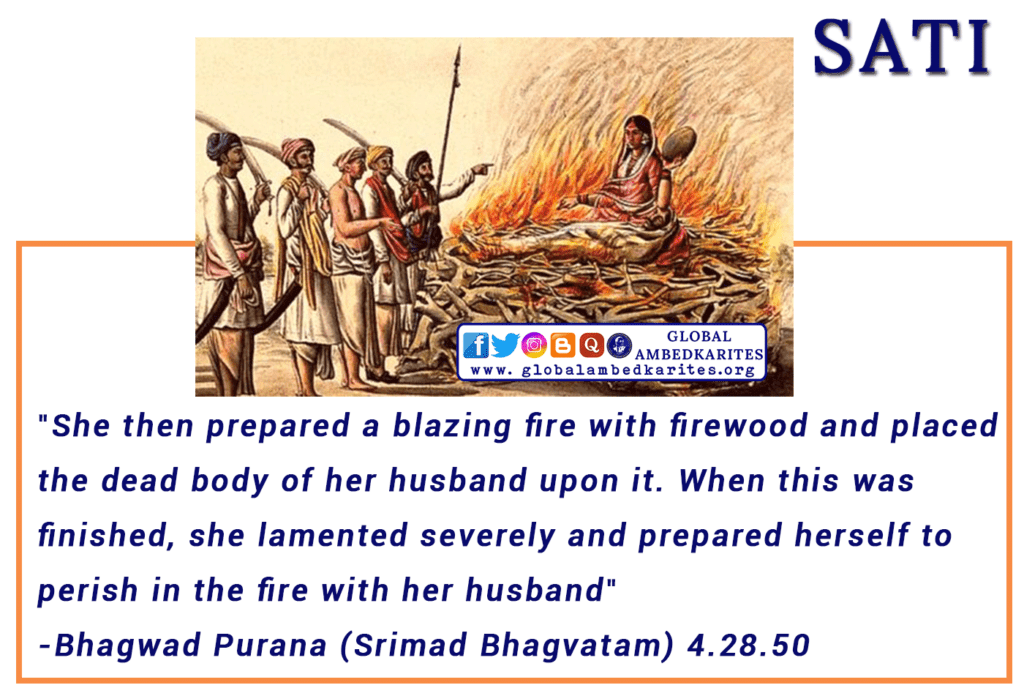
It is often propagated, giving reasons without proofs, that the Sati tradition of sacrificing the wife, in Hindu culture started because of the fear of Muslims. If that is so, why did the Hindus continue with this inhumane practice once there was no more a fear of attack by the Muslims?
Why did they have to wait for the British to put a ban on it before they stopped this evil practice?
The answer lies in the religious Brahmanic texts. It was sanctioned by the shastras that were written well before the so called Muslim Invasion.
“She then prepared a blazing fire with firewood and placed the dead body of her husband upon it. When this was finished, she lamented severely and prepared herself to perish in the fire with her husband”
Bhagwad Purana (Srimad Bhagvatam) 4.28.50
Swami Prabhupada writes on this verse of Bhagwad Purana
“It is the long-standing tradition of the Vedic system that a faithful wife dies along with her husband. This is called saha-maraṇa. In India this system was prevalent even to the date of British occupation. At that time, however, a wife who did not wish to die with her husband was sometimes forced to do so by her relatives. Formerly that was not the case — the wife used to enter the fire voluntarily (debatable). The British government stopped this practice, considering it inhuman. However, from the early history of India we find that when Mahārāja Pāṇḍu died, he was survived by two wives — Mādrī and Kuntī. The question was whether both should die or one should die. After the death of Mahārāja Pāṇḍu, his wives settled that one should remain and the other should go. Mādrī would perish with her husband in the fire, and Kuntī would remain to take charge of the five Pāṇḍava children. Even as late as 1936 we saw a devoted wife voluntarily enter the fire of her husband.’’
~A.C Bhaktivedanta Swami Prabhupada on Bhagwad Purana 4.28.50
[Source: SB 4.28.50 – Vanisource Purport]




